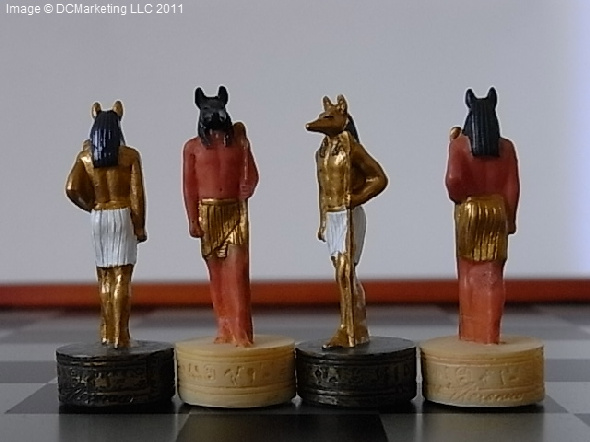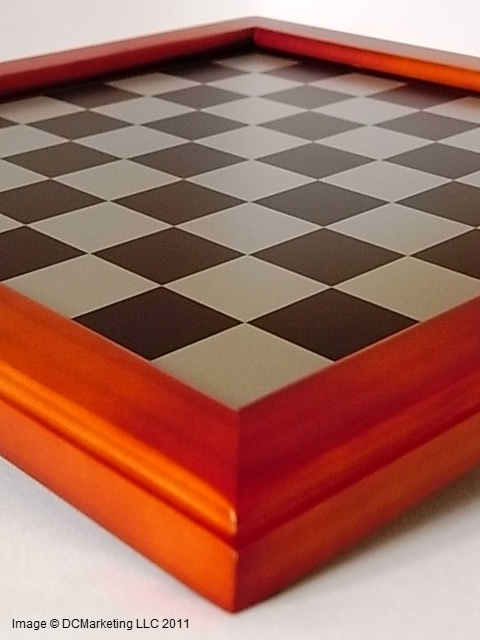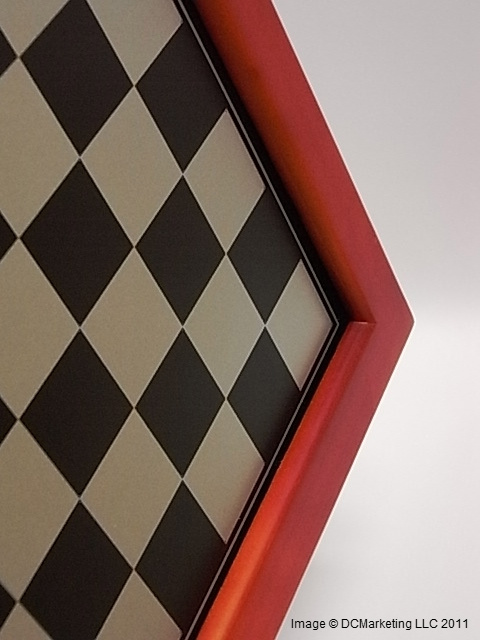|
 |
| Price: |
£59.95
|
| Sale Price: |
No Price
|
| Availability: |
Out of Stock |
| Prod. Code: |
AB005 |
|
by Studio Anne Carlton (SAC)
Chess Pieces: Ground stone and polyresin
King Height: 2.125" (54mm)
Complete with chess board:
- featuring a silk screen overlay surrounded by a varnished sheesham wood border
- square size: 27mm
- overall dimensions: 28cm x 28cm
- playing area: 22.5cm x 22.5cm
- depth: 1.5cm
Although the king stands only 2.125" high, there is no shortage of superb hand decorated detail in this 'mini version' Egyptian Themed Chess Set!
The king is represented by Osiris, the lord of the afterlife and depicted here holding the flail, symbolising his royal status and the sceptre which was inspired by the shepherd's crook - the shepherd of his people, the dead. God of the dead and of the underworld, Osiris was their protector during their passage into the afterlife. As the legend goes, Osiris became a victim of the wrath of his brother, Seth, and was cut into pieces by him only to be later brought back to life by Isis to take on his role as god of the underworld. Osiris embodied the promise of the life to come and is therefore also the god of vegetation, constantly being reborn.
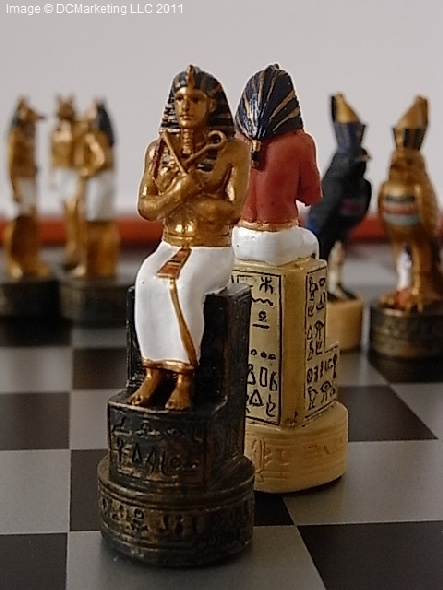
Isis, the supreme Egyptian goddess, represents the queen. Faithful and devoted wife of Osiris and mother of Horus, Isis was the guardian of children and of the dead. She is featured in our spectacular theme chess set complete with charactesitic headwear featuring upright horns either side of a solar disc.
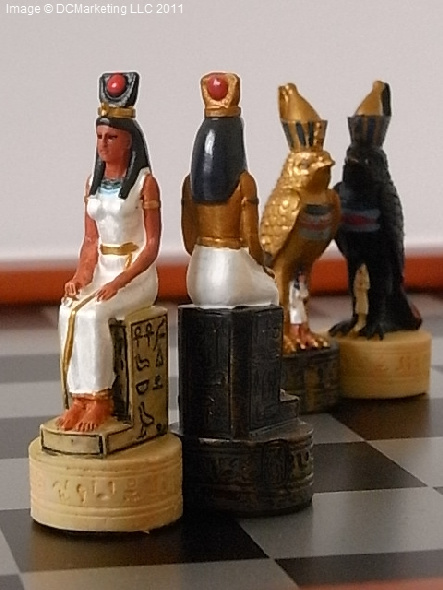
The goddess Bastet, daughter of Ra (Re), the sun god, is represented by the bishop. Bastet (or Bast). The personification of the soul of Isis, at least according to one source, Bastet was the goddess of cats, fire and the protector of the home and women in pregnancy. Her children were Mahes and Anubis (Anubis is represented by the pawn in this theme chess set).
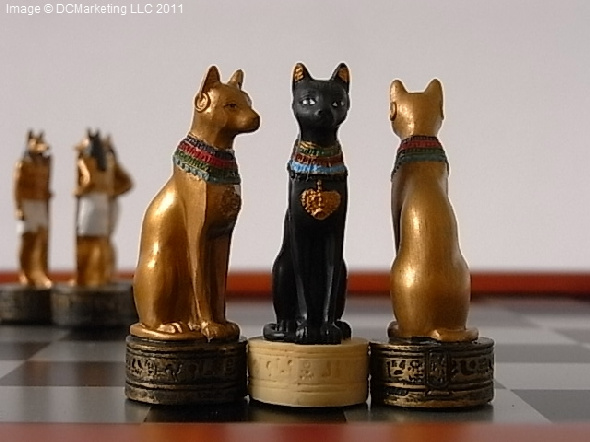
Horus, represented by the falcon, is our knight. The Egyptian word 'hor' from which the name derives means 'the one on high', hence God of the sky and the sun but Horus was also the symbol of the pharoah as the living god and the protector of soldiers - see in the image below that the knight even includes a tiny soldier protected underneath the breast of Horus...
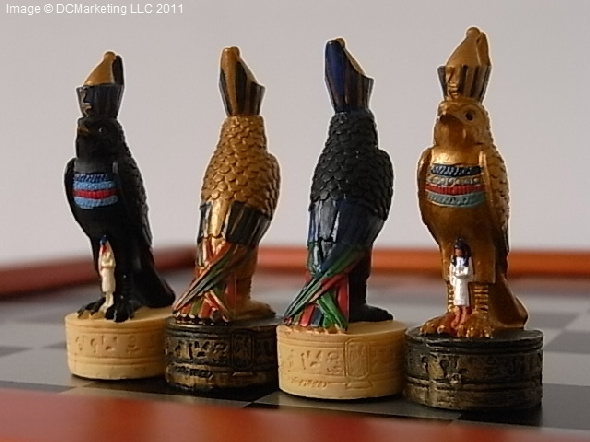
The speckled feathers on Horus' breast were viewed in Egyptian mythology as depictions of the stars, his wings as the sky. Over time, various local falcon gods became assimilated into one falcon god bearing the name Horus.
The unmistakable obelisk is our rook. Obelisks were made of single blocks of granite from the quarries of Aswan and topped with a pyramidion which was often covered in metal to reflect the rays of the sun. Usually placed in pairs, they were believed to provide protection at the entrances to tombs and temples. The word obelisk derives from the Greek word obeliskos which literally means a prong for roasting - but the purpose of this needle was actually to disperse negative forces! Take a moment to marvel at the detailed hieroglyphics on this piece, so characteristic of the originals...
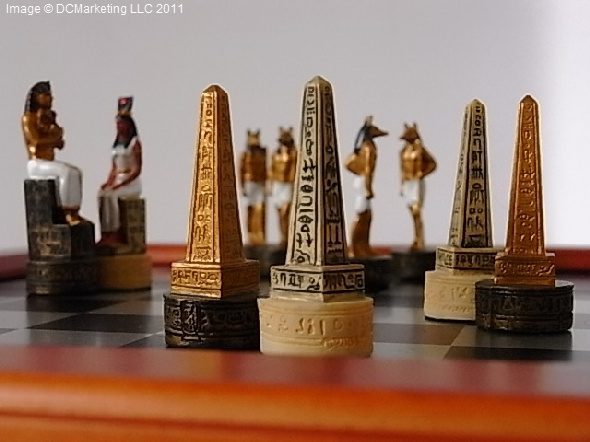
Anubis is the pawn. Represented as a man with the head of a jackal clutching his sacred sceptre in his left hand, a symbol of royal or divine power. The guardian of cemetries and the god of mummification. Anubis held the ankh, the cross of life - it was his weighing of the heart or soul in front of the scales of Osiris that would decide whether or not entry to the afterlife would be granted.
